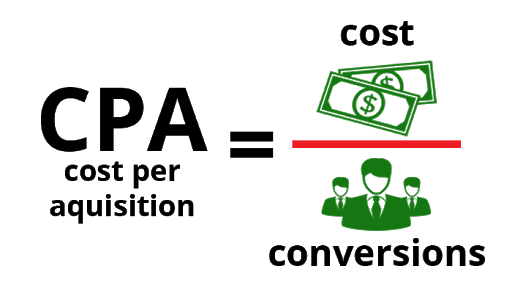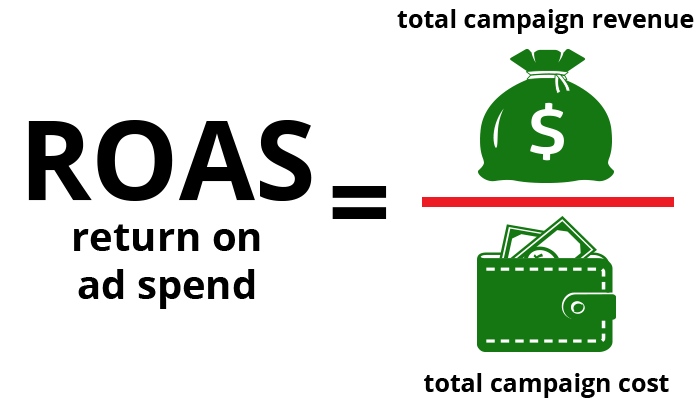Choosing the right digital marketing metrics to track is important for the success of your campaign. If you aren’t measuring your marketing efforts correctly, you won’t know what’s working or where to focus your marketing budget. If you determine your core ROI goals, you’ll be able to track data that tells the story of how your target audience interacted with your ads. Here are some common key metrics you can track that will help measure success and figure out your ROI:
CPA – Cost Per Acquisition
Cost per acquisition is how much it costs you to acquire a new lead. Knowing the cost to acquire a customer for your business helps you determine your marketing budget. That’s why it’s important to add this data to your ROI analysis. CPA, along with other data, helps you determine whether or not your business will make a profit. Ideally, you’ll want to decide which mix of channels (Facebook, search, display) works best for marketing your business. From there, you’ll be able to optimize your ad budget better.
Here’s the formula for CPA:

CPA is a simple but key formula. In order to understand your ad ROI, you’ll need to understand how much it costs to acquire new leads. However, this doesn’t tell us the actual value of each customer. The next thing we’ll talk about is LTV, another essential element in analyzing ROI.
LTV – Lifetime Value
It’s important to know the lifetime value of your customers. This number will give you an approximation of how much revenue a new customer can bring in while factoring in associated costs. Knowing your LTV will allow you to compare it directly to acquisition costs through your digital ad campaign.
Here’s the formula to figure out your LTV:

CR – Campaign Revenue
Once you understand how to determine and analyze the lifetime value of your customers, you can track how much revenue is generated by your digital marketing campaign. To determine your campaign revenue, you just multiply your campaign’s conversions by LTV and closing ratio, as shown below. Multiplying by the closing ratio accounts for new leads that don’t end up becoming customers. You’ll have to figure out how often you are able to close new leads in order to properly estimate campaign revenue.
ROAS – Return on Advertising Spend
ROAS is another insightful metric, popular amongst marketers who often use it interchangeably with ROI. However, there are considerable differences between the two. Tim Mayer, CMO of Trueffect explains the difference: “ROI measures the profit generated by ads relative to the cost of those ads. It’s a business-centric metric that is most effective at measuring how ads contribute to an organization’s bottom line. In contrast, ROAS measures gross revenue generated for every dollar spent on advertising. It is an advertiser-centric metric that gauges the effectiveness of online advertising campaigns.”
ROAS is greatly focused on the results from specific campaigns, while ROI focuses on the bigger picture in relation to the business. It’s much easier to track and analyze marketing efforts with ROAS since you know the cost and can calculate the revenue.



